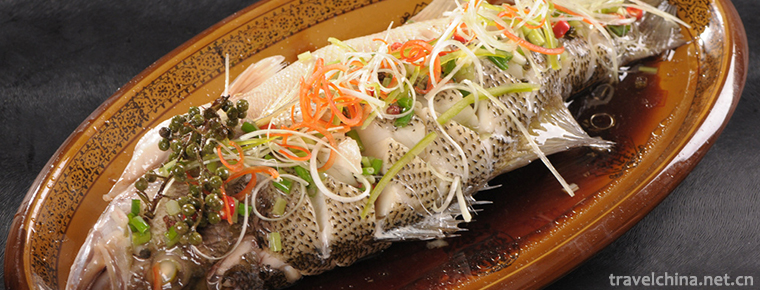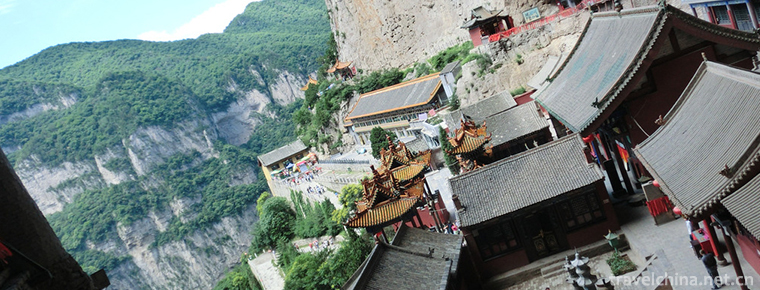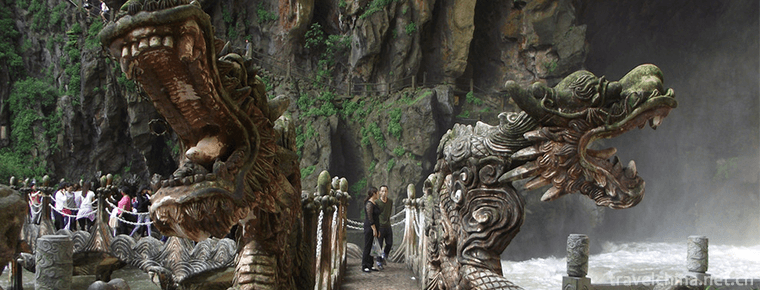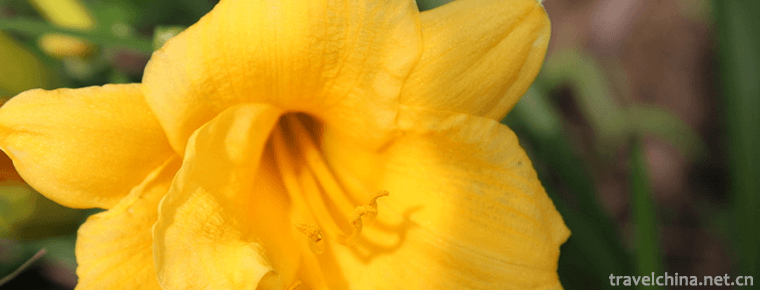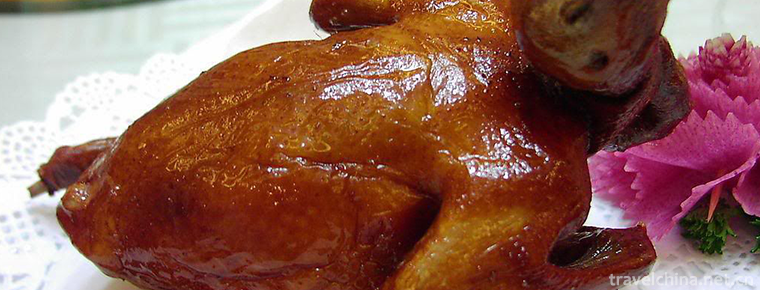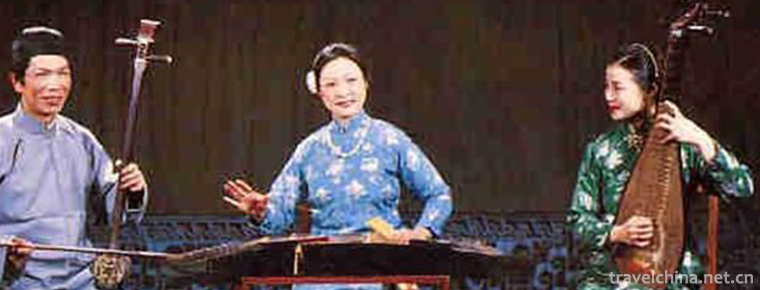June meeting in Regong
June meeting in Regong
Regong June Festival is a unique traditional cultural festival of Tibetan and Tu villages in Tongren County, Qinghai Province. It has been circulated for more than 1400 years. Every June in the Lunar calendar, Tibetan and Tu villages in Regong area hold local folk sacrificial activities. This is a humanistic phenomenon with strong primitive religious atmosphere, complex cultural form and rich cultural connotation.
It includes offering sacrifices to gods, inviting gods, greeting gods, dancing gods, worshipping gods, praying, sending gods, Military Dance performances, divine dance performances, dragon dance performances and so on. It is a grand religious festival jointly attended by Tibetans and Tus in Regong area. Dancing activities play a supporting role in this grand religious festival from beginning to end.
In May 2006, the Regong June meeting declared by Tongren County of Qinghai Province was approved by the State Council to be included in the first batch of national intangible cultural heritage lists.
Historical Origin
There are three related legends about the origin of the June meeting in Regong.
1. Legend has it that there were many beasts harming human beings in Tongren area long ago. Later, Dapeng birds flew from India to surrender these venomous snakes and beasts. In Tibetan, Dapeng birds were called Xia Qiong. In order to worship Xia Qiong, and to protect the weather and weather, Wugu Fengdeng, Tibetan and Tu villages within 12 kilometers of both sides of the Longwu River would carry out grand sacrificial activities, which were led by village mages. Leading the God sedan chair worshiping Xia Qiong, we went into the village to do things. We sang and danced, and the scene was very spectacular.
2. In order to celebrate the arrival of peace during the Tang-Tubo reconciliation, the Tubo general who guarded the local area paid homage to the local Guardian gods from June 16 to 25 and solemnly offered sacrifices, thus developing into the June Regong Meeting.
3. At the end of Yuan Dynasty and the beginning of Ming Dynasty, a mixed army of Mongolian and Han Dynasty in Yuan Dynasty accepted the enrollment of the Ming Dynasty in Longwu Valley and demobilized its armour for farming. In order to celebrate peace and tranquility, they held a solemn ceremony to pray for disaster relief, life and food. The June meeting of Regong was developed from then on. June has a fixed period of time. It is the seventeenth to twenty-fifth lunar month every year. The formal participants were all men and young unmarried girls, while the others were just spectators. The program form of June meeting is various, the atmosphere is warm and solemn.
The Tibetan name of Longwu Valley in Tongren County, Huangnan Tibetan Autonomous Prefecture of Qinghai Province is "Regong", which is literally translated as "golden valley where dreams come true". Every year from June 15 to 25 of the lunar calendar, more than 20 Tu and Tibetan villages along the banks of the Longwu River, such as Siheji, Guo Mori, Niandouhu, Wutun, Langa, Guashize and Baoan Xiazhuang, successively hold the June Regong Meeting in the village temple square. The Tibetan language calls it "June Lerui", which means to dedicate this grand song and dance to the gods in their hearts. The people of Regong hold the June Meeting. We hope for a peaceful and prosperous era in which grain is abundant, livestock are flourishing, villages are safe and life is healthy.
Folklore Activities
Major Customs
The "June Meeting" in Regong Tibetan Township is a folk custom activity with a unique style, which is popular in Tongren County, Huangnan Tibetan Autonomous Prefecture. It has a history of more than 400 years. It is held regularly from June 15 to 28 of the lunar calendar every year. The people of Regong participate widely. It contains rich cultural contents such as religious history, folk customs and customs, and is full of magic and joy. The main activities of the "June Meeting" include sacrifice to gods, upper mouth cutting, upper back cutting, dancing, climbing dragon poles, playing Dragon drums, and finally the mage "Kaishan". Among them, the most distinctive ones are "Shangkou Cutting", "Shangbei Cutting" and "Kaishan Cutting". "Shangkou Cutting" is a kind of steel needle pierced into the left and right cheeks by magicians for voluntary young people, also known as "lock", which is said to prevent diseases from entering from the mouth. "Upper Back Cutting" is to tie 10 - 20 steel needles on the back, dancers bare upper body, right hand drums, left hand drums, while tapping and dancing. The unique rhythm of dragon drums, rough and graceful dancing postures, colorful and precious costumes, mysterious and pious prayers bring joy and romance to the harvest-festival of Regong Tibetan Township. The June Party can be divided into three types: god-dancing, dragon-dancing, army-dancing, grand and grand scenes, graceful and unrestrained dancing postures, and the villages take turns to hold the festival with unprecedented grandeur.
Major activities
On June 17 of the Lunar calendar, the June Festival in Regong began in a Tibetan village called Siheji, and then dozens of Tibetan and Tu villages in the Longwu River Basin began one after another. The days of sacrificial activities vary from village to village, ranging from five days to two days. Every village holding the June Festival has a temple in which the village and the local god of protection are worshipped.
During the June meeting, the villagers'clothes were very exquisite, and dancers had to dress up. Men wear white or red high felt caps with Tibetan knives; women wear colorful Tibetan robes with natural gems as decoration, clothing appears colorful, dazzling, dignified and elegant.
The June meeting in Regong contains rich cultural contents such as religious history, folk customs and customs, full of magic and joy. The main activities of the June meeting included sacrifice to gods, upper mouth cuttings, upper back cuttings, dancing, climbing dragon poles and playing Dragon drums. Finally, the mage opened the mountain. The most amazing stimuli of the June meeting were top brazing, top brazing and mountain-opening.
1. Chanting and praying ceremonies
There are one or two "Lawa" (Tibetan, meaning God and Man, Chinese called magicians or wizards) in the villages where sacrificial activities are held, which play a special role in the sacrificial activities. Mages are considered to be communicators between man and God, enabling God to come to the body and speak for God. The Master is not a clergyman of Tibetan Buddhism, so his life is totally secular. However, a few days before the commencement of the sacrificial activities, the Master must keep his body clean and not touch women. He must go to the temple to receive the baptism of living Buddhas and hold chanting and praying ceremonies. This is an important ceremony before the commencement of the June Festival, and also an important feature of the June Festival in Regong.
2. Entertaining God by Dancing
The most prominent feature of the sacrificial activities of the June Festival is "entertaining gods by dancing". June will run through singing and dancing performances from beginning to end, mainly divided into three categories: Rushze (divine dance), Rushze (dragon dance) and Moheze (military dance), showing diversity in different villages. Rush is similar to Brazil's Samba Dance. It is performed by strong young men with drums and powerful movements. There is no lack of freedom in bravery. Rush dances lightly and freely, singing hymns, chanting eulogies, dancing, burning incense paper to the Dragon god, and protecting the villagers'life and prosperity. Mohe is an ancient Tibetan army dance. It is one of the three major dances in the Tongren area. The dancers hold bows in their left hand, sword in their right hand, round red top silk hat, red and green ribbons, tiger and leopard masks, shouting the slogan "Oha-Oha-Oha", dancing the scene of fighting between the two armies and performing mighty and fierce. These dances reproduce the ancient military culture and folk culture of the Qinghai-Tibet Plateau.
Each village has to perform ceremonial guest performances during the sacrificial activities. Dance teams of 10 to 20 people must be led by mages. When the guest dance team arrived at a different village, the host organized the whole village to go out and hold a grand welcome ceremony and a tea and dinner reception. Then, the dance teams of both sides performed under the leadership of their respective mages to entertain the gods together. At the same time, show people their unique style of dance.
The Tibetan and Tu people, through the ancient dance of "entertaining gods by dancing", pray for gods to bless the land with abundant grain, thriving livestock and favorable weather, which is the ultimate goal of this ancient folk sacrificial activity. The whole sacrificial activities show traces of primitive witchcraft everywhere. Here, "witchcraft is the dance wind" and "altar is the dance altar". Their dancing scale, number of people, time and complete system are rare in the existing folk dance culture.
3. Top Cutting
The upper cutter is a steel needle pierced into the left and right cheeks by a mage for a voluntary young man, also known as a "lock", which is said to prevent diseases from entering the mouth.
June meeting in Regong
4. Upper Back Cutting
The upper back cutter is to tie 10 - 20 steel needles on the back. The dancer is naked, holding the drum in his right hand, beating the drum in his left hand and dancing while tapping. The unique rhythm of dragon drums, rough and graceful dancing, colorful and luxurious costumes, mysterious and pious prayers have brought joy and romance to the rewarding Tibetan hometown.
5. Kaishan
Kaishan is a mage who cuts his head with a knife and spreads blood in all directions. It is an ancient and peculiar way of offering sacrifices to the heavens, fully demonstrating the hardworking, simple, wise and brave character of the Tibetan people.
Traditional Dance
In another village, an old man talked about the origin of dragon dance and military dance. That was when the Tibetan emperors Songzan Ganbu and Chisong Dezan confronted their colleagues in the Tang Dynasty and Tubo in Ganjia and other places at the junction of Xiahe River and sometimes fought. Later, the eminent monks of both sides reconciled, and the two sides finally ceased to fight and returned to peace. In order to celebrate the arrival of peace, the Tubo Army danced the Military Dance "Mo Heze" here. In order to show that there will be no more fighting in the future, the performers will break their batons one by one at the end. Later, when performing again, the baton was preserved as a prop and no longer broken. The Tubo troops later settled down with their colleagues and brought military dances here, from generation to generation. The old man also said that when the military dance was warming up, two dragons came out of the Dagayangtuo (Dagaran Sea) where they were stationed. One was like a tiger, the other was like a leopard, and they were happy with the dancers. The dance they danced was the Dragon dance, Rushze.
After worshipping the mountain god, the exciting grand dance began. Local people say that the dance in Siheji Village is a divine dance - "Rushze". Of course, some people also believe that the Nuo Dance in Siheji Village includes divine dance, Military Dance and dragon dance. It is a comprehensive Nuo Dance and should have its basis, but as a whole, its core part should be divine dance. "Rushze" is a dance of sacrificing mountain gods, Erlang gods, dragon gods and other local protection gods. It is also a large-scale folk custom celebration of sacrificing gods, which integrates various beliefs such as Benjiao, Buddhism and Taoism. The purpose is to pray for all gods to bless the local climate, rain, peace and auspiciousness.
That day, standing among all Tibetans dressed in festival costumes, like them, we watched the whole process of divine dance with piety. Because the dancing time is longer and the intensity is greater, young men usually take part in it. Older people go to maintain the order on the spot. In the warm sunshine at noon, dozens of brave Tibetan men hold face drums painted with dragons or eight treasures, while beating drums, while changing the formation of clang and dancing. These dance movements and formations have different meanings, such as "Rushize", which means inviting gods, is led by a mage to simmer the mulberry, and shouts "La Jialuo, La Jialuo" to the Xisangtai platform to celebrate the victory of the omnipotent god; "Tang Gasihade", which means the white sculpture spreads its wings, is the dancer's flying in the sky imitating the white sculpture revered by Tibetans; "East Ga is also cut" that is the right-handed conch, when dancing. The formation imitates the right-handed conch hovering and twisting, resembling the white conch, which is the auspicious thing in Tibetan eyes...
Unlike military dances and dragon dances, divine dances involve women. Zhuoma said that women who participate in divine dance must be unmarried. Some villages are limited to over 18 years old, while Siheji village can participate as long as they are unmarried, regardless of their age. This magnificent and solemn group dance is called "Gar" in Tibetan. It is said that it was created by the Queen Mother of the West and dedicated to the 13th God of War. This kind of dance has only one kind of same dance step from beginning to end. The dressed Tibetan girls first take three steps slowly, then offer Hada to the four sides. The look is so solemn and pious that even the little girls who usually like to make fun suddenly quiet down. Every move reveals their respect for God.
Everything is filled with a solemn and mysterious atmosphere. Tibetans'clangorous dancing and sometimes loud voices make people involuntarily enter into a reverie. As an out-of-the-way Han, I deeply regret that I can't really understand their hearts. This is the diaphragm between two cultures, which are fundamentally different, and between the heart and the heart. The last part of the divine dance can be described as the resounding ileum. Hundreds of male and female dancers arranged in a neat order, imitated the form of the right-handed white conch, constantly changing their formations, demonstrating the meeting and Carnival of man and God on a vast field.
The divine dance in Siheji Village lasts for three days and repeats the same dance every day. On the afternoon of the last day, all the dances were finished, all the people were arranged in front of the temple, and all the offerings were distributed into everyone's hands. The Master stood on the steps of the temple gate and sprinkled yogurt and wine... The crowd shouted in unison, then queued up to the mulberry drying table and poured all the supplies into the fire. In the smoke of the sky, Longda flies everywhere, the conch sounds long and solemn, and Tibetans dedicate the best sacrifices to God.
artistic characteristics
The annual Regong June Meeting is a special traditional cultural festival featuring pleasant gods in the Tibetan villages of Longwu Valley in Tongren County, Qinghai Province. It is said that it has a history of more than 700 years. The way of offering sacrifices to gods at the June meeting in Regong is unique in Tibet. There is no historical record of its origin. June will have the following characteristics:
First, there is a fixed period of time, which is held from June 17 to 25 of the lunar calendar every year. But not all villages start at the same time. Instead, the villages cross paths to facilitate mutual invitation.
Second, it is a festival of sacrificing mountain gods held in temples worshiping gods (rather than Buddhist temples). Legend has it that the great God of mountains, respected by the people, visits Chuang Tzu on this day, and the host should show great hospitality and warmth. Only when the mountain god is happy can he bless the village's auspiciousness and safety. The formal participants were all men and young unmarried girls, while the others were just spectators.
3. The host of the festival activities is the respected elder in the village and the magician of Benzhuang. The elderly represent public opinion. The mage, on the other hand, expresses public opinion and decrees divine intentions, predicting good or bad luck, eliminating disease and killing.
The Festival forms of April and June meetings are varied and the atmosphere is warm and solemn. The activities of each village are much the same, and every village does its best for the pleasure of the gods. The specific schedule includes simmering mulberries, inviting gods, dragon drums, dancing, sacrificial rituals, etc., while most of them include top brazing, mountain-opening, sketches and folk songs.
5. The June Regong Festival is also known as the Blood Sacrifice and Entertainment Festival. One of the most fascinating is Shangkou Brazing and Kaishan, where devout people dedicate their bodies and blood to the pleasure of mountain gods. June Festival in Regong is a folk festival that needs further study. To really uncover its mysterious cotton yarn, more scholars need to explore. In Huangnan, a huge impact of heterogeneous civilization is felt all the time. The legends and myths spread among the people may be incomprehensible, but they are intertwined with the lives of the local people and have long become their beliefs. They don't ask if God exists, whether it really brings them joy and happiness, because that's their life.
For those who grew up in China's inland plains, everything on the vast western plateau is a landscape. This is not only because distance creates beauty, but also because of cultural differences.
In Huangnan, in the bright sunshine of June in the lunar calendar, I felt this deep shock.
Inheritance Significance
The June meeting in Regong has strong traditional cultural characteristics. It integrates ceremonies, celebrations, singing and dancing, and folk opera performances. It has research value in the fields of art, religion, anthropology, folklore and culture. The June meeting contains thousands of years of religious history, rich folk customs and simple cultural content of the Qinghai-Tibet Plateau. Its magical and joyful manifestations, with strong Benzene religion heritage, are held only in the folk, entertaining gods and entertaining people, reflecting the simple, pious and enthusiastic character of the local people. The rich and colorful folk dance in June in Regong is an important carrier of sacrificial pleasure. It is the primitive form of the polytheism of folk religions in Regong area, and is the basis of the survival and prosperity of folk art. At present, the June Festival of Regong is still a folk festival to be studied in depth. To really uncover its mysterious cotton yarn, more research is needed.
Current status of protection
In order to better protect and inherit the precious intangible cultural heritage of Regong Art, the county Party committee and the county government have been persistently organizing forces for many years to excavate and protect it, at the same time, increasing the investment of funds, and strengthening the propaganda of Regong Art from a higher level. Since 2000, the county Party committee and the county government have been planning to declare the national and world intangible cultural heritage, and have made meticulous deployment and a lot of preparatory work on the declaration. In 2005, Tongren County submitted to the Ministry of Culture the text of the List of China's First Batch of Intangible Cultural Heritage declared by four projects, such as Regong Art. In June 2006, Regong Art, the June Meeting of Tibetan Township, Tu's Yuqiu Dance and Regong Tibetan Opera were approved by the Ministry of Culture to be included in the List of China's intangible cultural heritage, which laid the foundation for Regong's declaration of the world intangible cultural heritage. Basics.

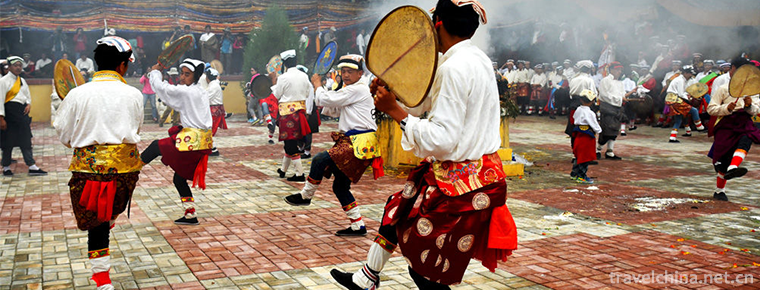
-
Steamed perch with scallion and black beans
Steamed bass cooking techniques are mainly steamed dishes, and their taste is salty and fresh. Steamed perch is one of the famous traditional dishes in Guangdong province.
Views: 177 Time 2018-11-02 -
Yesanpo Scenic Area Laishui County Baoding
The Yesanpo Scenic Area of Laishui County, Baoding City, Hebei Province, is located in Laishui County, Baoding City. The Taihang Mountains and Yanshan Mountains.
Views: 189 Time 2018-11-24 -
Mianshan Scenic Area
Mianshan Scenic Spot is a national AAAAA class tourist attraction, a key scenic spot in Shanxi Province, the birthplace of Ching Ming Festival (Cold Food Festival),.
Views: 299 Time 2018-11-24 -
Longgong Scenic Area of Anshun City
Located in the southern suburb of Anshun City, Longgong Palace is adjacent to Huangguoshu Scenic Area and 116 kilometers away from Guiyang City, the provincial capital..
Views: 129 Time 2018-12-12 -
Guan Lin Scenic Area
Guanlin, a national key cultural relic protection unit, National AAAA tourist attraction, is the first place for the burial of Shu generals Guanyu in the Three Kingdoms period. The former is an ancest.
Views: 129 Time 2018-12-24 -
Hainan Tropical Wildlife Park and Botanical Garden
Hainan Tropical Wildlife and Botanical Garden is a national AAAA-level tourist attraction with the theme of popular science exposition, conservation and reproduction, sightseeing, leisure and vacation.
Views: 249 Time 2019-01-13 -
Eight treasures quail
Babao quail is a dish. Its main ingredient is pure quail, etc. Its ingredients are purple quail, lotus seed, etc. Its seasoning is peanut oil, salt, soy sauce and so on. It is made by deep-frying..
Views: 256 Time 2019-03-25 -
Brewing Techniques of Maotai Liquor
Maotai liquor brewing technology, the local traditional handicraft technology of Maotai Town, Zunyi City, Guizhou Province, is one of the national intangible cultural heritage..
Views: 158 Time 2019-05-29 -
Siming Nanci
Siming Southern Ci is also called "Siming Documents". A kind of traditional local folk art in Zhejiang Province. Tanci, spoken and sung in Ningbo dialect. It is popular in Ningbo, Zhejiang P.
Views: 186 Time 2019-06-16 -
Anhui University
( Anhui University For short, "anda" is located in the provincial capital. Market It's the state. "Double First-Class" initiative "World class discipline construction," M.
Views: 196 Time 2019-10-04 -
Animal resources in Yibin
There are nearly 1000 species of vertebrate resources in Yibin City. Among them, there are 70 species of mammals in 23 families; 306 species of birds in 16 orders, 46 families; 34 species of reptiles in 2 orders, 9 families; 29 species of amphibians; and 151 spe.
Views: 352 Time 2020-12-18 -
Guangan hydrology
There are two main streams of Jialing River and Qujiang River in Guang'an City. There are more than 700 large and small rivers and streams. There are 35 primary and secondary tributaries with a drainage area of more than 50 square kilometers. Among the.
Views: 326 Time 2020-12-19
